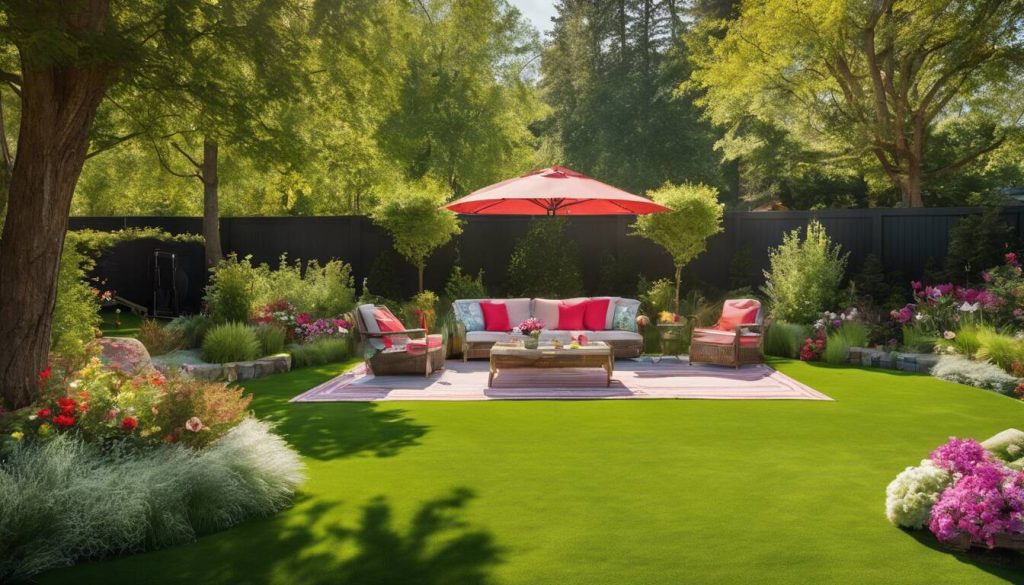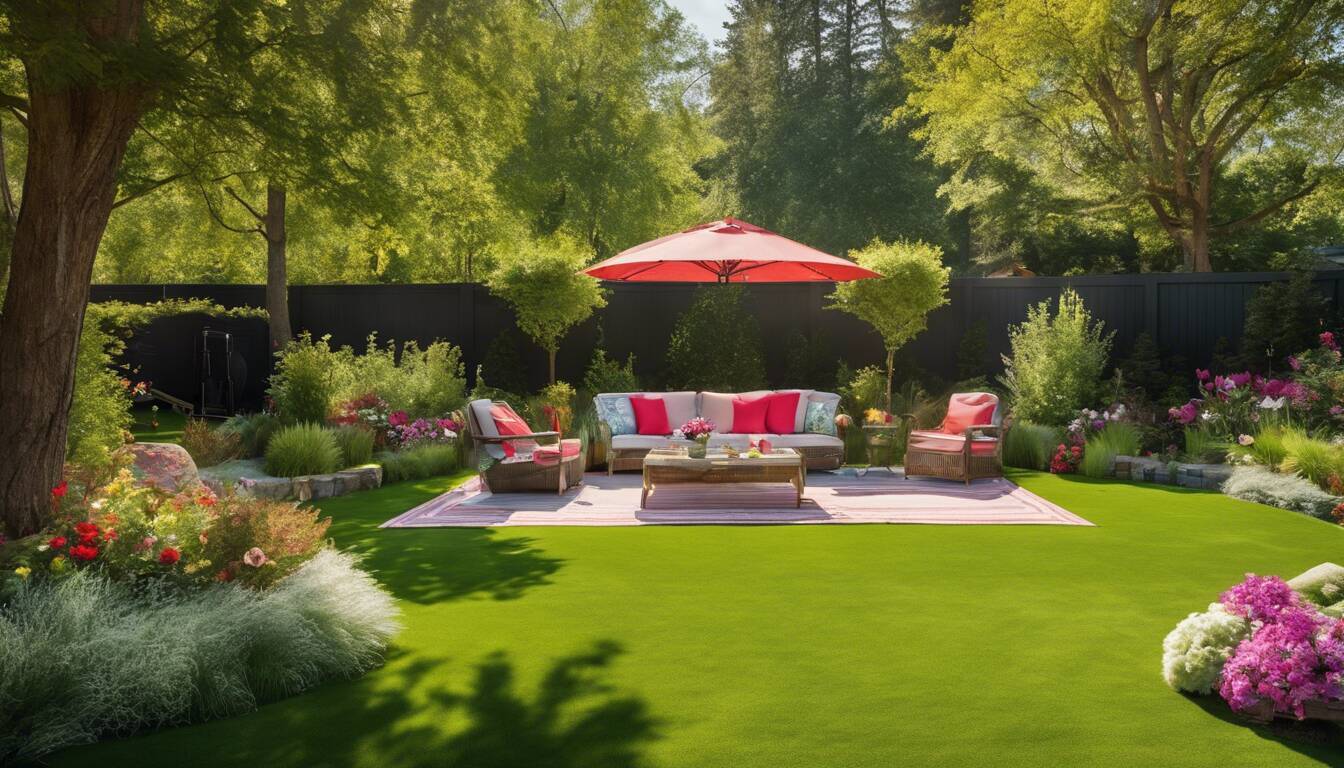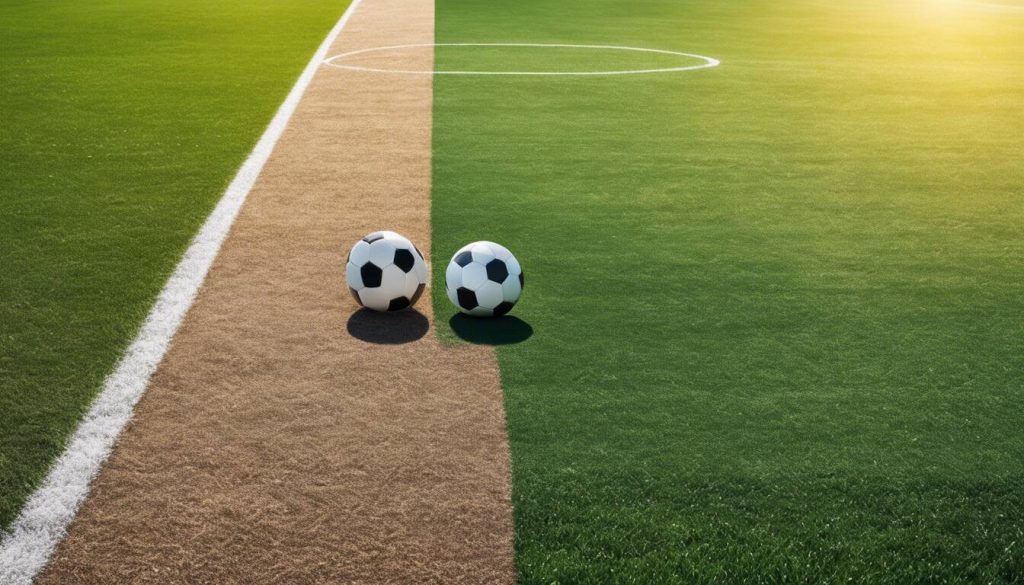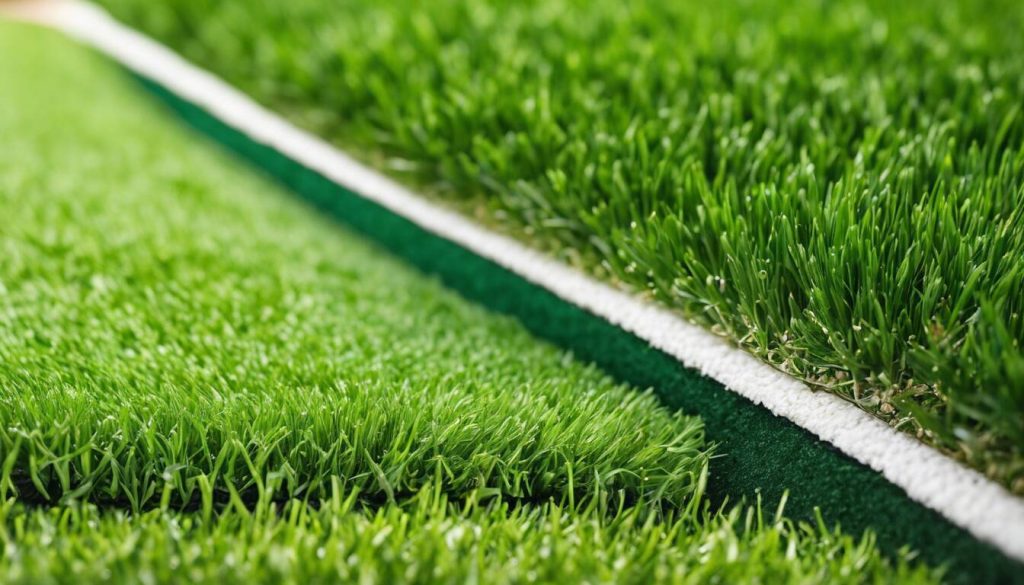If your quest for a lush, green, easy-to-maintain lawn amidst the vibrant cityscape of Liverpool seems like an uphill battle, don’t despair — there’s an oasis in sight. Today we delve into why artificial grass has become a favourite option for pet owners, eco-enthusiasts and budget-savvy residents alike. The seamless blend of functionality, aesthetics, and sustainability might just make you reconsider your lawn choices. Get ready to dive into a world where pristine green is the year-round norm, no mowing required.
Artificial grass offers numerous benefits, such as low maintenance requirements, long-lasting durability, and a lush appearance all year round. It requires no watering, mowing, or fertilising, saving both time and money. Additionally, synthetic turf is highly resilient, UV-resistant, and drains well, making it suitable for various weather conditions. Its consistent colour and texture create a vibrant and comfortable outdoor space while reducing water consumption and providing a practical landscaping solution.
Advantages of Artificial Grass for Your Pets
As a pet owner, your furry friend’s happiness and comfort is a high priority. That’s why opting to instal artificial grass can be a wise decision that benefits both you and your pets. Here are some advantages of artificial grass that pertain specifically to our furry friends.
Suppose you have a beloved dog with an insatiable appetite for digging up patches of grass. In that case, synthetic turf can solve this problem by eliminating the need to plant new grass seed or roll out sod every few weeks.
Firstly, compared to traditional grass, artificial turf doesn’t trigger certain allergies in dogs and other pets. This could be due to the lack of pollen, mites or other harmful toxins prevalent in natural lawns. Secondly, synthetic turf does not get muddy which means no more brown paw prints all over your carpet or floors. Artificial lawns soak up any liquids such as urine or faecal matter, preventing unsanitary stains from clinging onto your pet’s paws.
Artificial Grass is also perfect if you have dogs that struggle with joint issues as it is incredibly supportive and cushions their movements while they play. This benefit is great as it can help prevent pets from being injured while playing on tough surfaces. It’s also worth noting that many artificial turfs will contain chemicals that just like in natural grass can irritate pets’ skin so look for artificial turf free from lead and heavy metals.
Besides providing a comfortable space for your pets to play on, let’s discuss how these synthetic lawns can bring added hygiene and health benefits to you and your animals.
- Installing artificial grass can be a great choice for pet owners as it provides numerous benefits for our furry friends. Artificial turf eliminates the need to constantly replant grass or deal with patches dug up by dogs. It is also allergen-free and prevents muddy paws, making it a cleaner and more hygienic option. Additionally, synthetic grass offers excellent support and cushioning for pets with joint issues, reducing the risk of injuries while playing. However, it’s important to choose artificial turf without harmful chemicals to avoid skin irritations. Overall, artificial grass not only creates a comfortable space for pets but also enhances hygiene and health for both animals and their owners.
Hygiene and Health Benefits
Natural lawns come with the inconvenience of pest infestations like ticks and fleas, fungus growth and adverse effects of pesticides used on them – making it unhealthy for both pets and humans. These risks are minimised when switching to synthetic turf; since the grass fibres are non-organic and do not attract germs, parasitic insects or other pests. It also eliminates the need for harmful chemicals like herbicides, pesticides or fertilisers crucial in maintaining natural lawns.
Artificial grass is also environmentally friendly and water-efficient since it does not require regular watering – making your lawn immune to drought conditions and helping conserve water. With artificial turf, you don’t have to worry about excess moisture buildup beneath the surface that typically gives rise to bacterial growth and unpleasant odours.
Imagine never having to battle with brown spots or dormant patches on your lawn?
The reduced maintenance that artificial lawns require makes them more cost-effective in the long run as well, especially for pet owners. With synthetic turf, you don’t need to invest in a lawn mower, trimmers, weed killers or similar expensive machinery else needed for natural grass upkeep.
Durability and Comfort
As pet owners, we know that our furry companions are full of energy and love to play in the backyard. However, this can cause havoc on natural grass, resulting in bare patches and muddy puddles. Artificial grass is an excellent solution to such problems. It’s incredibly durable and can withstand trampling, digging, and scratching from paws. Moreover, synthetic lawns offer a soft and comfortable surface for pets to lay down or play around.
Take the case of Tom, an avid dog owner who had been facing lawn deterioration owing to his pup’s constant digging. Despite numerous attempts to revive the natural grass position through investing in different fertilisers and garden treatments, nothing seemed to do the trick until Tom opted for artificial grass installation that provided a lush green lawn while holding up well against his dog’s playful behaviour.
Furthermore, traditional grasses attract bugs and insects, which could be harmful to pets; however, artificial landscaping minimises this by creating a barrier to pests naturally.
Lastly, with today’s advanced technology, synthetic turf is designed soft yet resilient- allowing pet owners comfort at their fingertips while providing an open yard for pets to roam free without concerns about uncomfortable surfaces.
Now let’s take a moment to explore another crucial aspect of artificial grass – its environmental impact.
- According to a study conducted by Rutgers University, owners of artificial lawns can cut their water use by 50% to 70%, contributing significantly towards conservation.
- The Synthetic Turf Council estimates that the use of artificial grass has resulted in the reduction of between three to six billion gallons of water in 2010 alone.
- A study published in the Journal of Environmental Management found that artificial grass can reduce maintenance costs by up to 75% compared to traditional natural grass.
Environmental Impact of Artificial Grass
Artificial grass holds numerous benefits over traditional gardening-solutions specifically in its ability to mitigate environmental damage by reducing water consumption. We all know that maintaining natural grass requires significant watering resources as well as routine maintenance activities such as mowing and fertilising which contribute towards the environment’s degeneration over time.
On the other hand, synthetic turf saves on water usage immensely since it doesn’t need frequent watering thereby having considerable savings of approximately 70% annually compared to regular grass [TABLE]. This has led many homeowners associations and municipal councils throughout several states adopting artificial landscaping solutions officially.
Artificial grass is also eco -friendly in that absence fertiliser and pesticides reduce toxins found in natural grasses that can potentially seep into groundwater systems. In many cases, leaching of chemicals from traditional lawns can lead to groundwater contamination and hence its usage can be limited through adoption of artificial landscaping solutions meaning less runoff, which ultimately benefits local wildlife.
Think about it as though your garden is climate-friendly. You are creating less waste and conserving water resources while eliminating unwanted chemical runoffs, so your kids or pets can play carefree without anxiety surrounding the degradation of our immediate environment.
In addition to exploring the environmental benefits, we should also consider any displaced arguments against this solution; let’s examine these more closely before concluding.
####DEBATE
One common criticism levied against artificial turf is its association with rising temperatures due to reflected solar radiation resulting in “urban heat islands.” However, specific measures save up to 30% on cooling costs- for example, using shade trees or lighter shades of synthetic turf.
What’s more, some say that synthetic lawns aren’t biodegradable- thereby contributing towards landfill accumulation & unsustainability similar to traditional plastic products- a point worth considering except that most, if not all suppliers adhere to strict manufacturing regulations using recyclable methods lowering material buildup over time.
Water Conservation
As we become more aware of the consequences of climate change, conserving our planet’s natural resources has never been more critical. Artificial grass is an excellent way to do your part while maintaining a beautiful yard for your pets and family. A single square foot of natural grass requires an average of 55 gallons of water annually. In contrast, artificial turf does not require watering. Consequently, installing synthetic grass on your property can reduce your water consumption significantly.
Suppose you have a 1,000 square feet lawn in Liverpool with real grass. By switching to artificial turf, you could save up to 55,000 gallons of water yearly.
Aside from reducing water usage, synthetic lawns offer another benefit that ties into wider environmental concerns.
Low Carbon Footprint
Global warming and carbon dioxide (CO2) emissions continue to pose significant challenges for the planet. This is where the carbon footprint comes into play – this term refers to the number of greenhouse gases (such as CO2) produced by human activities like driving cars or using electricity.
Natural grass growth and maintenance emit substantial amounts of these gases over time. For instance, machines used to cut the grass consume gas and pollute the environment in addition to fertilisers and pesticides.
On the other hand, artificial grass emits no waste gas or toxic substances under normal circumstances since it doesn’t require harmful chemical treatments that can pollute rivers or soil sources. Additionally, synthetic turf installations don’t require mowing equipment, which eliminates petrol consumption and pollution.
Through installing artificial turf in your lawn, you help minimise your carbon footprint without sacrificing a visually appealing yard that suits your pet’s lifestyle.
Think of it similarly to investing in electric cars – small changes with significant long-term benefits.
We’ve discussed how installing artificial lawns reduces water consumption while lessening carbon dioxide emission – now let’s explore how synthetic grass can help you maintain a low-maintenance yard.
Keeping Your Yard Low Maintenance with Artificial Grass
Maintaining natural grass lawns can be a time-consuming task that requires regular watering, mowing, and fertilising. On the other hand, artificial grass for pets offers a low-maintenance solution that saves time and effort in maintaining your yard, giving you more time to spend with your furry friends. Unlike natural grass, which can grow fast, get patchy or die over time, synthetic turf maintains its lush appearance all year round.
Imagine not having to spend countless hours every week trimming edging or cutting grass eventually leading to unused piles of clippings mounting up on your lawn.
Artificial grass lawns don’t need mowing, so there’s no need for the purchase or upkeep of expensive mowers or trimmers. The surface is always even hence eliminating bumps and dips caused by uneven terrain. Its high durability prevents damage caused by regular play and paws repeatedly creating run paths, bare spots and brown patches due to urine discoloration.
Other advantages include the absence of weeds such as dandelions and thus reducing instances of pests in a garden like insects and rodents especially in summer thereby granting peace of mind while hosting outdoor events or merely relaxing by yourself in your backyard.
Now that we have established how artificial grass reduces maintenance costs related to natural lawns it’s essential to understand other pocket-friendly benefits.
Pocket-Friendly Benefits of Artificial Grass
While initial installation costs may seem high compared to planting natural turf initially, consider the long-term cost benefits with artificial grass that makes it a pocket-friendly landscaping option. Unlike natural lawns needing frequent maintenance checks plus longer watering hours during summer months hence leading to an increase in utility bills, synthetic turf doesn’t require routine fertiliser application, constant irrigation supply nor pesticides to maintain its lush and healthy image.
Long-Term Cost Benefits
One of the most significant benefits of investing in artificial grass is its long-term cost-saving potential compared to natural grass lawns. With a natural lawn, you must ensure regular watering, mowing, feeding and pest control. All these activities require significant time, effort, and money in terms of maintenance costs. However, choosing artificial grass saves you maintenance costs that quickly add up over time.
The installation of synthetic turf ensures that there are no water bills or expensive equipment required. Unlike natural grass, artificial turf is not susceptible to harsh weather conditions and does not require any reseeding practises. Additionally, fertilisers and chemical pesticides aren’t necessary as they can be detrimental to your pet’s health and pollute the environment.
For instance, consider the cost of watering your lawn. According to data from the United States Environmental Protection Agency (EPA), an average household can use up to 320 gallons of water per day during summer months just on outdoor usage. As such, opting for synthetic turf eliminates irrigation costs that substantially reduce your water bill in the long run.
| NATURAL GRASS | ARTIFICIAL GRASS |
|---|---|
| Watering | No Watering Required |
| Mowing | No Mowing Required |
| Fertilisers & Chemical Pesticides | Not Required |
| Reseeding Practises | Not Required |
Let us now focus on how versatile artificial grass can be without compromising on aesthetics.
Versatile Applications of Artificial Grass
Apart from landscaping your garden with artificial grass, there are numerous applications where it has proven useful. Most notably is the proliferation of pet-friendly parks designed with artificial turf for recreation areas meant for dogs and other pets.
Artificial grass provides an excellent surface suitable for both indoor and outdoor sports fields such as football and soccer fields, tennis courts, and golf courses due to its consistent texture and surroundings. Additionally, the safe and durable nature of synthetic grass surfaces with proper shock-absorbing qualities makes them ideal for athletic fields and facilities.
Artificial grass has also seen an increasing demand in indoor settings due to its low maintenance, aesthetic appeal, and durability. It is often installed in commercial and residential areas such as trade shows, corporate events, exhibition spaces and home decor.
It’s also common to instal artificial grass on balconies and rooftops. The warmth that real grass radiates can cause severe damage when installed above an occupied space. However, artificial grass provides insulation and heat resistance while being able to hold up solar panels without any damage.
Artificial grass is like a multi-purpose tool which can be utilised in many areas beyond gardens. It provides an aesthetically pleasing solution to any dull outdoor or indoor space.
Having discovered various versatile uses of artificial turf let’s now further unpack landscaping and recreational benefits in more detail.
Landscaping and Recreation
If you have pets, you know how challenging it can be to keep your lawn green and healthy. Urine burns, digging up of grass, and constant wear and tear are just a few of the issues pet owners face when growing natural grass in their yards. Artificial grass provides an aesthetically pleasing solution that has numerous benefits beyond just a lovely-looking garden.
A primary selling point is the low-maintenance requirement. Artificial grass is easy to care for since it requires no trimming, watering, or fertilising. This ease of maintenance implies that the cost savings over time can be substantial. Moreover, artificial turf maximises your outdoor living space by providing a durable surface suitable for a whole host of outdoor activities like picnics, barbeques or playing games with your pet.
When compared to natural grasses, implementing artificial lawns saves on several environmental fronts. Natural lawns need constant upkeep with fertilisers or harmful pesticides that foster an environment for pollution and harm beneficial insects like bees and butterflies. Implementing artificial turfs will eliminate the usage of these pollutants hence preserving the natural environment.
Exploring the Aesthetic Appeal of Artificial Grass
With advancements in technology, today’s artificial turf is much more similar to natural lawns than older generations. The grassfibers are constructed from soft materials that mimic the real thing, while sand-based infill enhances traction for extra stability underfoot which prevents slipping accidents. The end result is an attractive lawn-like aesthetic without any of the upkeep needs.
Artificial grass comes in a range of colours and lengths, allowing you to select what suits your landscaping needs best. Whatever your preference may be- whether long or short textured turf; synthetic lawns ensure that you have control over its appearance regardless of weather conditions.
While some detractors claim that fake grass looks too perfect or uniform to pass as real – one thing is sure – artificial grass is a beautiful and inviting landscaping solution. One of the aspects of note is that it will add to your home’s curb appeal since its lushness serves as a complement to any household. What’s more, the aesthetic beauty of artificial grass also extends to commercial use cases whereby well-manicured gardens surrounding office buildings provide an exquisite and inspiring space for both clients and employees.
Having examined the landscaping benefits of artificial turf let us discuss how you can approach choosing the right artificial turf for your home or commercial use.
Selecting Artificial Grass
It is crucial to pick the correct product when installing artificial lawns. With a bevvy of options in different shapes, colours, materials, and aesthetics, settling on one can be a daunting task. Here’s an overview table to make decision-making more accessible:
| Type of Artificial Grass | Description |
|---|---|
| Nylon Turfs | Provide durability and resistance but are costly |
| Polyethylene Turfs | Affordable with softer feel; not good for areas under constant sunlight |
| Polypropylene Turfs | High resiliency makes them ideal for high traffic areas |
The intended usage plays a critical role in deciding which type of artificial grass to instal. For example, landscapes with moderate foot traffic require nylon turfs due to their endurance. On the other hand, lighter traffic areas such as balconies are suited with polyethylene turfs as they are soft on feet.
Picking out the right synthetic lawn demands a bit of research but finding the perfect fit can lead you into having a beautiful year-long outdoor experience without any maintenance costs associated with natural grass – ultimately saving you funds in your wallet.



